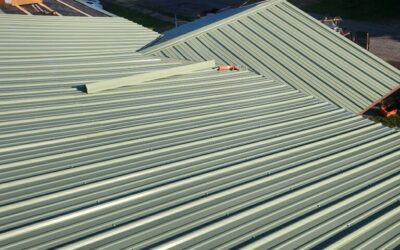Roof Leak Near Exhaust Vent Pipe: Causes, Consequences, and Solutions
Introduction
A roof leak near the exhaust vent pipe is a common yet often overlooked issue that homeowners may face. While leaks near exhaust vent pipes can sometimes be minor, they can also lead to significant structural and health problems if not properly addressed. Understanding the causes, identifying the signs of a leak, and knowing how to fix the problem can save homeowners from costly repairs and long-term damage.
In this guide, we will explore why roof leaks occur near exhaust vent pipes, the potential consequences of these leaks, and how to effectively address and prevent this issue. Whether you’re a homeowner dealing with this problem or simply looking to understand more about roof maintenance, this blog will provide the necessary insights to tackle it confidently.
What is an Exhaust Vent Pipe?
Before diving into roof leaks, it’s important to understand what an exhaust vent pipe is and its role in your home.
An exhaust vent pipe is a crucial component of your roof ventilation system. These pipes are typically found in kitchens, bathrooms, and laundry rooms where moisture, heat, and gases (such as carbon dioxide) are released from the home. Common examples include:
- Bathroom exhaust vent pipes: These remove moist air produced by showers and baths to prevent mold and mildew.
- Kitchen vent pipes: These exhaust gases from cooking, such as smoke, heat, and cooking odors.
- Dryer vent pipes: These vent hot air and moisture from your clothes dryer.
Each of these vent pipes exits through the roof, where the pipe is sealed with flashing to prevent water from entering the home. However, if these pipes aren’t sealed properly, it can lead to leaks around the roof, especially during storms or heavy rain.
Why Do Roof Leaks Occur Near Exhaust Vent Pipes?
Now that we know what exhaust vent pipes are and where they are typically located, let’s explore the potential causes of leaks around these areas.
1. Improper Installation of Exhaust Vent Pipe
One of the most common reasons for leaks around exhaust vent pipes is poor installation. If the vent pipe is not correctly installed or sealed during the roofing process, water can easily penetrate around the pipe. A poorly installed vent pipe can lead to gaps between the pipe and the flashing, which can allow rainwater or melting snow to seep through, causing a leak inside the home.
2. Flashing Failure
The flashing is a metal or rubber sealant that is placed around the vent pipe where it protrudes through the roof. Its purpose is to create a waterproof barrier between the vent pipe and the roof surface. Over time, flashing can deteriorate due to exposure to the elements, such as wind, rain, and UV rays from the sun. When the flashing wears down or becomes damaged, it is no longer able to provide an adequate seal, leading to leaks.
3. Corrosion of the Exhaust Pipe
Certain materials used for exhaust vent pipes, such as galvanized steel, can corrode over time due to exposure to water, heat, and chemicals from the air. When corrosion sets in, holes and cracks may form in the vent pipe, leading to leaks. This is particularly common in coastal areas where the saltwater in the air accelerates the corrosion process.
4. Clogged Vent Pipe
A clogged vent pipe can lead to water backing up and pooling around the vent area. When debris such as leaves, bird nests, or dirt accumulates inside the vent pipe, it can block the flow of air or exhaust gases. As a result, water may collect around the vent pipe and eventually leak into the home, especially if the flashing is already compromised.
5. Age of the Roof
As a roof ages, its materials may begin to deteriorate. This includes the shingles, flashing, and seals around the exhaust vent pipe. Older roofs are more susceptible to water infiltration, especially if they have not been properly maintained. Even if the vent pipe itself is intact, an older roof can contribute to leaks around the vent pipe.
6. Storm or Severe Weather Damage
Strong storms or severe weather conditions can cause significant damage to your roof, including the area around your exhaust vent pipe. Heavy rain, high winds, and hail can weaken flashing, dislodge shingles, or create gaps around the vent pipe, leading to leaks. In some cases, a storm may even cause the vent pipe itself to become misaligned, resulting in water penetration.
7. Poor Roof Design
In some instances, the design of the roof can contribute to leaks near the exhaust vent pipe. Roofs that have a complex structure with multiple angles or valleys can cause water to pool in certain areas, including around the vent pipe. Improper drainage on the roof can increase the risk of water accumulating near the vent pipe, leading to leaks.
Signs of a Roof Leak Near the Exhaust Vent Pipe
It’s essential to identify roof leaks early to prevent significant damage to your home. Here are some common signs that you may have a leak near your exhaust vent pipe:
- Water stains on the ceiling: One of the most obvious signs of a leak is the presence of water stains or discoloration on the ceiling near the vent pipe. This may indicate that water is entering your home through the roof.
- Damp or musty odors: A leak can lead to mold growth or mildew, which often results in a musty smell. If you notice a persistent damp odor near the exhaust vent pipe, it could be a sign of a leak.
- Visible water drips: During heavy rain, you may notice water dripping from the ceiling or walls near the exhaust vent pipe. This is a clear indication that water is leaking through the roof.
- Damaged or missing shingles: Inspect the roof for damaged or missing shingles around the vent pipe. Missing or broken shingles can expose the roof to water infiltration.
- Visible damage to the flashing: If the flashing around the exhaust vent pipe appears to be cracked, rusted, or worn out, this could be the cause of the leak.
Consequences of a Roof Leak Near Exhaust Vent Pipe
Ignoring a roof leak near the exhaust vent pipe can lead to several serious consequences, including:
1. Water Damage to the Interior of the Home
Water entering your home through a leaky roof can cause significant damage to the interior. This includes damage to ceilings, walls, insulation, and flooring. The longer the leak persists, the more extensive the damage will be. Water damage can be costly to repair, and if left untreated, it can lead to structural issues in your home.
2. Mold and Mildew Growth
The presence of moisture inside your home can create the perfect environment for mold and mildew growth. Mold spores can spread rapidly, leading to health concerns, particularly for individuals with respiratory issues or allergies. Removing mold from your home can be expensive and time-consuming, and in some cases, the affected areas may need to be replaced entirely.
3. Electrical Hazards
Water that enters through the roof can come into contact with electrical wiring, outlets, or light fixtures. This creates the potential for electrical hazards, including short circuits or even fires. If you notice water near electrical components, it’s important to turn off the power and address the leak immediately.
4. Compromised Structural Integrity
Water infiltration over time can weaken the structure of your roof, attic, and even the foundation of your home. Wood beams, trusses, and rafters may become rotted or weakened, which could lead to more severe structural damage. Repairing structural damage can be extremely costly and may require professional help.
How to Fix a Roof Leak Near Exhaust Vent Pipe
If you notice a roof leak near your exhaust vent pipe, it’s crucial to act quickly to prevent further damage. Here’s how you can address the problem:
1. Inspect the Roof
First, you’ll need to inspect your roof to determine the source of the leak. Use a ladder to safely access the area near the vent pipe. Look for any missing or damaged shingles, broken flashing, or gaps around the vent pipe. If you’re unsure about the cause of the leak, consider hiring a professional roofer to assess the situation.
2. Replace Damaged Flashing
If the flashing around the exhaust vent pipe is damaged, it will need to be replaced. You can do this by removing the old flashing and installing a new one. Make sure the new flashing fits snugly around the vent pipe and is properly sealed to prevent future leaks.
3. Seal Gaps Around the Pipe
Use a high-quality roofing sealant to seal any gaps or cracks around the vent pipe. Make sure the sealant is designed for outdoor use and can withstand exposure to weather elements. Apply the sealant generously around the base of the pipe and any visible cracks in the surrounding flashing.
4. Replace or Repair the Vent Pipe
If the vent pipe itself is damaged or corroded, it may need to be replaced. This can be a more complicated job that may require professional assistance. If the pipe is simply clogged, clear the debris and ensure proper airflow through the vent.
5. Check the Attic for Signs of Water Damage
Once the roof leak is addressed, it’s essential to check the attic for any signs of water damage. Inspect insulation, beams, and the underside of the roof for moisture. If you find any signs of damage, replace the affected insulation or materials.
6. Schedule Regular Roof Maintenance
Regular roof inspections and maintenance can help prevent roof leaks from occurring in the future. Schedule annual roof inspections and have any necessary repairs done promptly to ensure your roof remains in good condition.
 (440) 307-2060
(440) 307-2060



